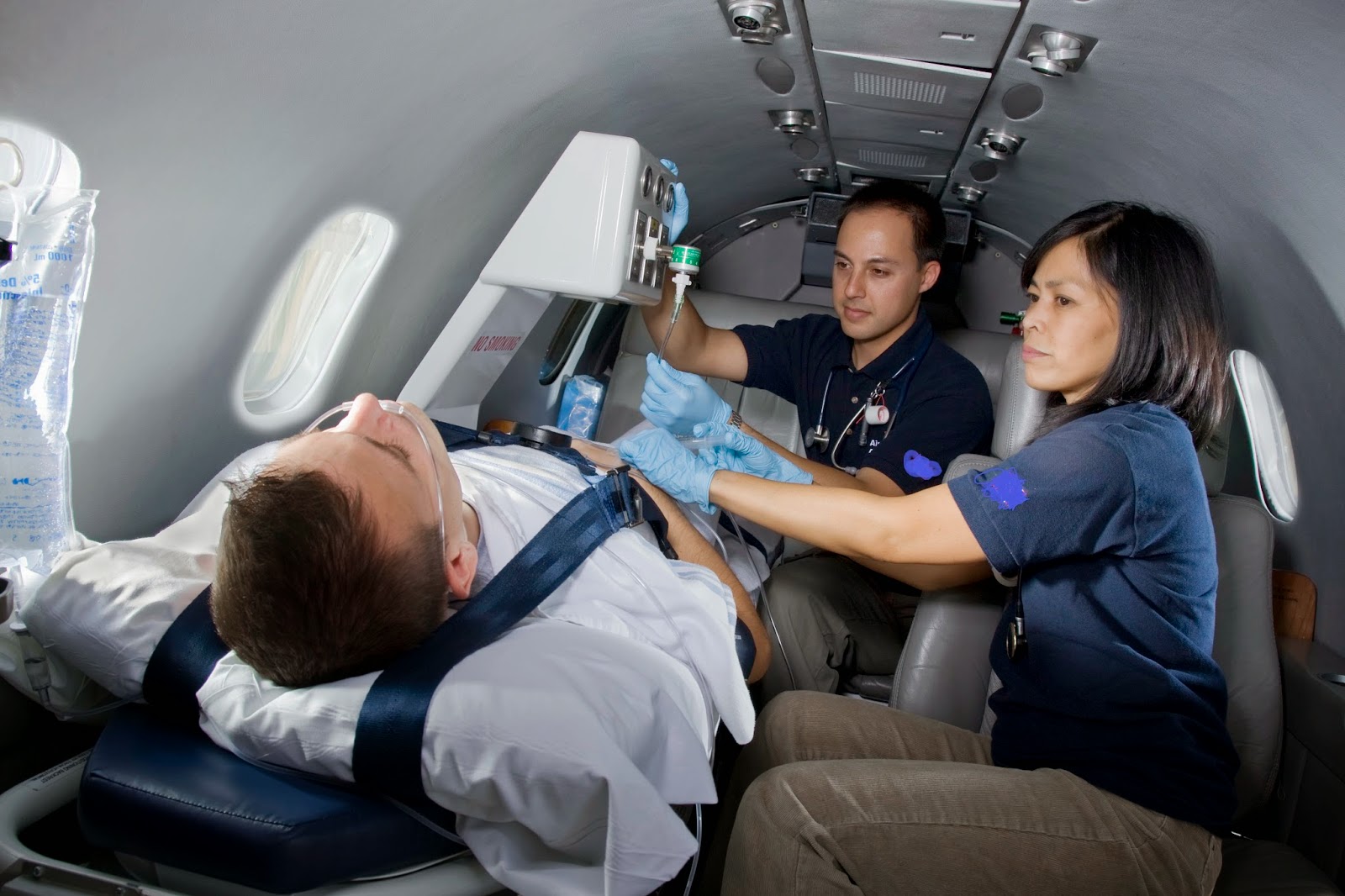In the United States, approximately 550,000 medical patients are flown in either rotor or fixed winged air ambulance aircraft each year. This Traveler's Guide will help answer common questions such as what to bring in terms of identification, how much to pack, traveling during religious holidays, and much more.
Understanding checkpoints and knowing what identification to bring
Routine air travelers can be in for a bit of a shock when it comes to understanding security checkpoints and what types of identification to bring. Normally, the Transportation Security Administration (TSA) works together with the Federal Flight Administration (FAA) to make sure public air transportation is secure. However, medical flights are not treated the same way as commercial airlines. For example, there are no security checkpoints to pass through and no specific federal requirements on what types of identification to bring. Instead, each provider sets their own guidelines.
How to board your flight faster
Whereas flight delays on a commercial airline can be an annoyance, they can be life threatening to those on medical flights. The best way to avoid delays is to request a transfer in advance. A brief explanation of the patient's condition and other important information (time sensitive concerns, originating and destination location, along with an approximate travel date) will help the flight director coordinate a customized travel itinerary.
How to pack for your flight
The TSA puts a litany of restrictions on carry-on items that do not apply to air ambulance travelers. Portable medical oxygen concentrators, gel-type candies, and non-service pets are just a few. However, certain medical travel recommendations are the same. For example, select patients will want to be sure to bring along the following:
Traveling during religious holidays
Traveling during Ramadan (July 9-August 8, 2013) can be especially stressful for practicing members of the Muslim faith. These travelers might feel more comfortable contacting a provider that takes a holistic approach to patient care. Providers specializing in holistic care are highly skilled in creating an environment that is more relaxing and comfortable than traditional emergency medical transport systems.
Traveling with children
Medical flight professionals know that ill or injured children pose a unique challenge when traveling by air. Oftentimes, these patients present with little or no symptoms before their health deteriorates. As a result, flight coordinators frequently put together teams of highly trained doctors and specialists with pediatric and neonatal intensive care unit (ICU) experience in advance. When flying outside the US, parents will want to ensure their child's vaccines are current.
Denise K. Wayne has been with air ambulance provider AirCARE1 International for over 10yrs. To learn more, contact her, or a request a transfer: click here.
Article Source: http://EzineArticles.com/?expert=Denise_K._Wayne
Related Articles:
"http://traveler-life.blogspot.com/2014/08/unique-5-tips-for-easy-air-travel.html "
"http://traveler-life.blogspot.com/2014/08/what-do-you-do-if-you-lose-your-airline.html"
"http://traveler-life.blogspot.com/2014/09/airline-tickets-learn-how-to-book-low.html"
Understanding checkpoints and knowing what identification to bring
Routine air travelers can be in for a bit of a shock when it comes to understanding security checkpoints and what types of identification to bring. Normally, the Transportation Security Administration (TSA) works together with the Federal Flight Administration (FAA) to make sure public air transportation is secure. However, medical flights are not treated the same way as commercial airlines. For example, there are no security checkpoints to pass through and no specific federal requirements on what types of identification to bring. Instead, each provider sets their own guidelines.
How to board your flight faster
Whereas flight delays on a commercial airline can be an annoyance, they can be life threatening to those on medical flights. The best way to avoid delays is to request a transfer in advance. A brief explanation of the patient's condition and other important information (time sensitive concerns, originating and destination location, along with an approximate travel date) will help the flight director coordinate a customized travel itinerary.
How to pack for your flight
The TSA puts a litany of restrictions on carry-on items that do not apply to air ambulance travelers. Portable medical oxygen concentrators, gel-type candies, and non-service pets are just a few. However, certain medical travel recommendations are the same. For example, select patients will want to be sure to bring along the following:
- prescription medications (i.e., nitroglycerin tablets).
- a list of current medications including specific dose intervals and pill sizes.
- copies of your last ECG results.
- pacemaker card (if applicable).
- a list of dietary restrictions.
- an electric cart or wheelchair (if not restricted to a stretcher).
- a pacifier for children and toddlers.
Traveling during religious holidays
Traveling during Ramadan (July 9-August 8, 2013) can be especially stressful for practicing members of the Muslim faith. These travelers might feel more comfortable contacting a provider that takes a holistic approach to patient care. Providers specializing in holistic care are highly skilled in creating an environment that is more relaxing and comfortable than traditional emergency medical transport systems.
Traveling with children
Medical flight professionals know that ill or injured children pose a unique challenge when traveling by air. Oftentimes, these patients present with little or no symptoms before their health deteriorates. As a result, flight coordinators frequently put together teams of highly trained doctors and specialists with pediatric and neonatal intensive care unit (ICU) experience in advance. When flying outside the US, parents will want to ensure their child's vaccines are current.
Denise K. Wayne has been with air ambulance provider AirCARE1 International for over 10yrs. To learn more, contact her, or a request a transfer: click here.
Article Source: http://EzineArticles.com/?expert=Denise_K._Wayne
Related Articles:
"http://traveler-life.blogspot.com/2014/08/unique-5-tips-for-easy-air-travel.html "
"http://traveler-life.blogspot.com/2014/08/what-do-you-do-if-you-lose-your-airline.html"
"http://traveler-life.blogspot.com/2014/09/airline-tickets-learn-how-to-book-low.html"


No comments:
Post a Comment